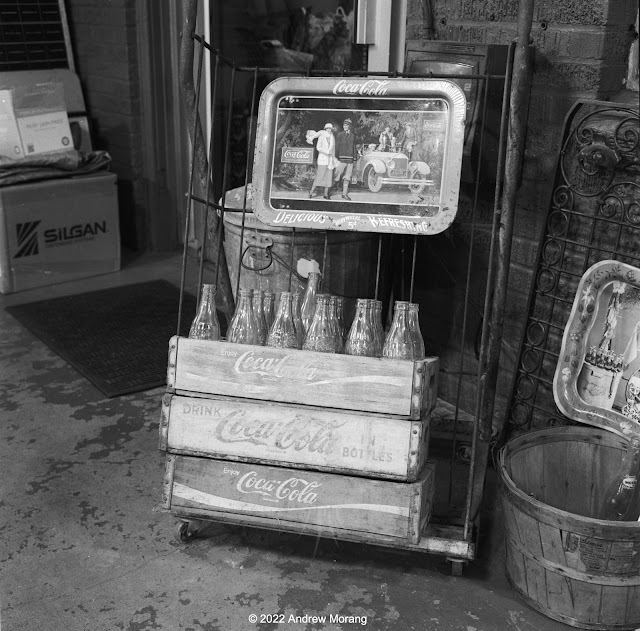We continue our Hasselblad XPan tour of Jackson, Mississippi.
Jackson was, and still is, a major railroad junction town. I like railroad photography and am always impressed by how massive the railroads build their bridges and infrastructure are. In the previous article, you saw the rail overpass on South Gallatin Street. If we drive north, we reach Pascagoula Street. Turn right (east) and the road drops under the tracks.
 |
| Near the Pascagoula Street rail overpass, Jackson (30mm ƒ/5.6 lens) |
The Amtrak station is just north of where I took this picture, just beyond the King Edward Hotel (now comdominiums). I later found out that I am not supposed to have clambered up to the embankment ("No trespassing").
 |
| Waste land south of Pascagoula Street (30mm ƒ/5.6 lens) |
The tall building in the photograph is the 1929 Art Deco Standard Life Building. According to the
National Park Service,
Originally built as a tenant office building with a retail annex, the building and annex have undergone a successful $27 million rehabilitation providing retail space on the first floor of the tower and 64 desirable market-rate housing units. The limestone, brick and terra-cotta exterior has been meticulously cleaned, the transoms of the storefronts, display windows and entrances uncovered and restored. The elaborate Art Deco marble, terrazzo floor, limestone wall panels, geometrically shaped storefront windows and decorative ceilings have been retained while finding a popular new use for this Jackson architectural treasure.
I have never been in it and need to make a trip there.
The low building beyond the white car is an abandoned lock store. I photographed there in 2015.
 |
| North Mill Street view north from Woodrow Wilson overpass (45mm lens at ƒ/8) |
The Woodrow Wilson Avenue overpass provides a good view of the Canadian Pacific rail yards and tracks below. The public is not allowed in the rail yard, but from the overpass, you can see locomotives moving rail cars back and forth. I usually park near Mill Street and walk on the sidewalk. Cars rush by but no one cares. Many of the warehouses on the east side appear to be unused.
Mill Street is pretty rough, with closed gas stations, warehouses, and what may have been manufacturing operations. Many of the warehouses once had tracks leading onto the properties. I wrote about Mill Street in
2016 (click the link).
 |
| Abandoned oil mill from under Fortification Street overpass (45mm lens) |
 |
| Fortification Street overpass view west |
The next road crossing to the south over the rail yard is Fortification Street. Just to the south is a complex of sheds and tubes, an unused oil mill. With the XPan camera, I liked the view under the overpass, sort of a no-man's land of trash and construction debris.
These photographs are from a Hasselblad XPan camera with its spectacular 45mm ƒ/4 and 30mm ƒ/5.6 lenses. The film was Kodak Portra 160, which I scanned on a Plustek 7600i film scanner. Click any picture to see it at 2400 pixels wide.
Next time, some scenes in west Jackson. Can't you wait?

















































